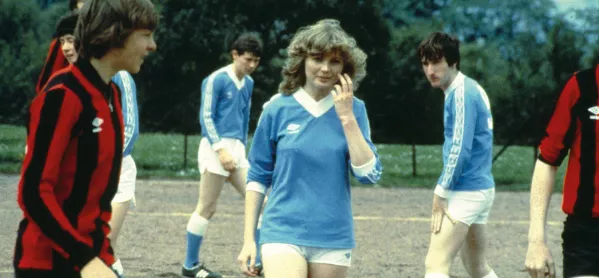When I was at school, girls had to wear green gym knickers to take part in PE. We were in single-sex classes, which was something, at least. But if the boys happened to pass by, we went into a formation not dissimilar to “the tortoise” used by Roman soldiers to protect themselves from the enemy. We huddled together, using arms to shield exposed bodies, jostling our way to the centre of the group for protection from their jeers.
These lessons were divided into blocks of cross-country running, hockey, basketball, athletics, swimming. There was no choice. It’s safe to say I hated it all.
That, however, was two decades ago and I had assumed much had changed since then, but Professor David Kirk, head of the school of education at the University of Strathclyde, insists not.
Much remains the same as in the 1970s - never mind the 90s - with six-week blocks of the kinds of traditional activities that I reluctantly took part in during early secondary. But PE should instead be about encouraging girls, whose exercise habits drop off a cliff as they enter adolescence, “to learn to value the physically active life”, he says.
Not everyone agrees with Kirk’s analysis. Russell Imrie, president of the Scottish Association of Teachers of Physical Education, says it is “ludicrous” to suggest that PE lessons have remained unchanged for decades. He points out that there is far more variety of activities on offer - girls are often given the chance to do Zumba and BodyPump - and dance looms large in many schools.
But I’m not so sure that it was the activities that were the problem. Many of us weren’t comfortable in our own skin, so we certainly weren’t comfortable baring it.
Kirk, who has been piloting a new approach to delivering PE to adolescent girls in four Glasgow secondaries, points out that, unlike the other subjects on the secondary timetable, PE is a very public display with failure witnessed by all.
He argues that PE teachers should start by building a foundation with their class that makes girls feel safe and comfortable. They need to address the barriers to girls participating by taking the time to get to know them and their concerns, and allowing them to get to know each other.
They should open girls’ eyes to all of the things that PE can be, he says, beyond team sports, and then give them more choice. The American academic, Kim Oliver, who Kirk has been collaborating with and who has been trying to find better ways to engage girls in PE for 20 years, says finding out about girls’ likes and dislikes and planning lessons accordingly is key to securing their buy-in.
But as Imrie notes, while physical activity is an important part of PE, teachers are also trying to impart skills: co-ordination, rhythm, timing, balance. Breadth is important, but so is depth, he argues. Imrie suggests one solution: that schools should deliver physical activity as well as PE. The Daily Mile - an initiative whereby children undertake 15 minutes of walking or running every day - has taken off in primary, so why not in secondary?
The easy response seems to be that in secondary, there is neither the space nor the time. But how can that be when health and wellbeing is one of the three pillars of our curriculum, supposedly on a par with literacy and numeracy?
We know young people are under pressure - particularly as the exams loom large - and we know that their mental health is suffering. We also know that physical activity is a tonic. So which Scottish secondary is going to be the first to teach its pupils that you don’t need to be kitted out in sports gear (or green gym knickers) “to learn to value the physically active life”?
@Emma_Seith




